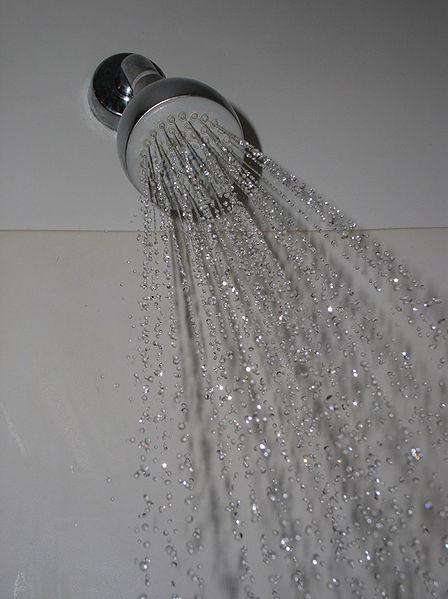- News
- Reviews
- Bikes
- Components
- Bar tape & grips
- Bottom brackets
- Brake & gear cables
- Brake & STI levers
- Brake pads & spares
- Brakes
- Cassettes & freewheels
- Chains
- Chainsets & chainrings
- Derailleurs - front
- Derailleurs - rear
- Forks
- Gear levers & shifters
- Groupsets
- Handlebars & extensions
- Headsets
- Hubs
- Inner tubes
- Pedals
- Quick releases & skewers
- Saddles
- Seatposts
- Stems
- Wheels
- Tyres
- Tubeless valves
- Accessories
- Accessories - misc
- Computer mounts
- Bags
- Bar ends
- Bike bags & cases
- Bottle cages
- Bottles
- Cameras
- Car racks
- Child seats
- Computers
- Glasses
- GPS units
- Helmets
- Lights - front
- Lights - rear
- Lights - sets
- Locks
- Mirrors
- Mudguards
- Racks
- Pumps & CO2 inflators
- Puncture kits
- Reflectives
- Smart watches
- Stands and racks
- Trailers
- Clothing
- Health, fitness and nutrition
- Tools and workshop
- Miscellaneous
- Buyers Guides
- Features
- Forum
- Recommends
- Podcast
news
 Shower.jpg
Shower.jpgChilly end to race day helps maintain performance
A cold bath after a long spell in the saddle helps sports cyclists recover faster, a new study from Australia has shown.
Looking forward to a hot bath and a long soak was the traditional way of unwinding after a tough ride, but not any more it seems.
According to Dr Joanna Valle, of the Australian Institute of Sport in Canberra, the hot bath is only slightly better than simply sitting down and resting when it comes to maintaining performance.
On the other hand, a chilly dip and alternating between hot and cold water aids a much faster recovery than previously thought. Some pros already do this, ending every post ride shower by turning on the cold – no matter what the weather they've just ridden through, last year's Tour winner Carlos Sastre is a notable exponent of this approach.
Dr Valle and her research colleagues compared the effectiveness of different water temperatures and simple resting using 12 male cyclists undertaking strenuous exercise, similar to the performances on multiple days required in stage racing.
The 12 riders completed a five-day "fatigue-inducing" cycle of exercises, four times each, with nine days' rest between each cycle. The athletes used one of four recovery strategies after each day of exercise: immersion in a 15 degree C (59 degree F) pool for 14 minutes; immersion in 38 degree C (100.4 degree F) water for 14 minutes; alternating between cool and hot water every minute for 14 minutes; or 14 minutes of rest.
Cyclists' sprint and time trial performance was maintained or slightly improved with cool water immersion and contrast water therapy, but both declined with hot water dips or rest only, the researchers found.
Cold water improved sprint performance by 0.5 to 2.2 percent and time trial performance by 0.1 to 1.0 per cent, while contrast water therapy improved sprint and time trial performance by 0.1 to 1.4 per cent and 0.0 to 1.7 per cent, respectively. Sprint performance fell by up to 3.7 per cent with hot water immersion, and time trial performance dropped by up to 3.4 per cent, only slightly less than was seen with rest only.
According to the team, the findings "suggest that cold water immersion and contrast water therapy may be beneficial recovery interventions following and between events such as track cycling where the task requires short maximal efforts, as well as longer events such as stage races where the task requires continuous high-intensity efforts on successive days.”
I assume you can carry an e-bike battery on the tube if you leave the bike at home. ...
I love it - it's a roundabout with a sculpture of a roundabout on its desk!
From the position of the cyclist when the video starts and the position of the bike later, it looks highly unlikely that the cyclist went "into the...
To rhyme with design. I wondered this myself so looked it up a while ago, according to the founder Micki Kozuschek he and his team had a few...
It's not being pedantic at all, careless driving is successfully prosecuted (and I have been in court more than once when a driver has been...
It's hopefully an urban myth but I heard it was designed that way on purpose, so the cyclepath captured any flooding and the busway would remain clear
I should imagine eating chopsticks anywhere could be potentially rather perilous.
When The Badger stopped for protesters (albeit dockworkers rather than farmers) it was their stress gauges rather than his that would have been...
Having experienced a brain injury (while my helmet only suffered a little crack) I welcome all this excellent research which looks for ways to...
Nope. Has anyone ever bought a wheel trim studded with diamonds for their car? Thought not.